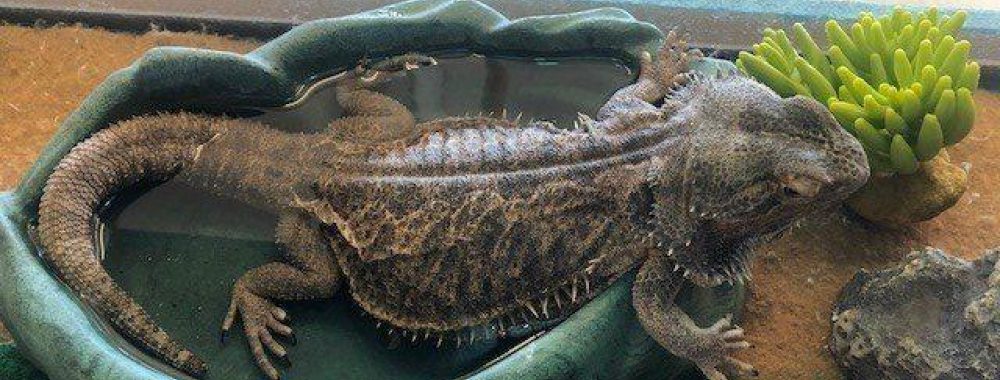Ray
Fast Facts
- Class: Reptilia
- Order: Squamata
- Family: Agamidae
- Genus:Pogona
- Species: Vitticeps

Lifespan
Average 4-10 years
Natural Habitat
There are several species native to Eastern and Central Australia in arid or semi-arid environments of desert, dry forest and scrubland.
Features
So named for the distinct spiky beard-like skin under the jaws, these lizards can puff out this expandable throat pouch to bluff predators when threatened. Males will also flare their beards and bob their heads to show dominance and when competing against other males during breeding season. They also have a spiny exterior with spikes and rough scales to dissuade predators. Another natural defense is excellent camouflage: their coloration depends upon their surrounding habitat and color of the soil or sand, ranging from dull brown to tan with red or gold. They range in length from 13 - 24 inches (including the tail).
Diet
Opportunistic Omnivores, hunting during warm daylight hours (diurnal) for insects, spiders, invertebrates, occasional small vertebrates including rodents and lizards, and fruits, leaves and other plants. Here they are fed a salad of chopped mixed greens, veggies and fruits along with superworms and crickets. In their natural habitat in the vast and remote Australian Outback, food can be very hard to find, so they are generally not too picky; however Ray is rather accustomed to being hand fed!
Conservation
Non-native predators that were introduced to Australia including foxes and domestic cats are a major threat to individual bearded dragons, though luckily their official status remains one of "least concern". Other predators include birds of prey, pythons, dingo, and goannas (Australian Monitor Lizards). Bearded dragons are protected in Australia, so cannot be collected from the wild and export was banned in the 1960's. They are widely bred in captivity though, so are quite common.
Fun Facts
- Bearded Dragons can help regulate their own body temperature by changing colors - slightly darkening their skin will attract more heat!
- They do not vocalize, but rather communicate through body language.
- Bearded dragons have a very unique behavioral display to communicate with others of their same species known as the "arm wave": standing up on three legs and then actually waving one of the front legs in a slow circular motion! This is thought to be a display of submission, as it is done by smaller males and females when approached by a larger dominant male. Though normally solitary and territorial, they do sometimes congregate at favored basking sites and encounter each other during breeding season.
- When threatened, not only do they inflate their throat pouch, but the scales over the pouch can turn dark black (which really does look like a beard!) and they may open their mouth wide, stand taller and puff out their sides - all to appear larger and thus more intimidating. Both males and females have beards, but males use them for display more often.
- They have a very sticky tongue that can quickly snatch and pull their prey back into their mouth literally in the blink of an eye!


We love meeting new people!